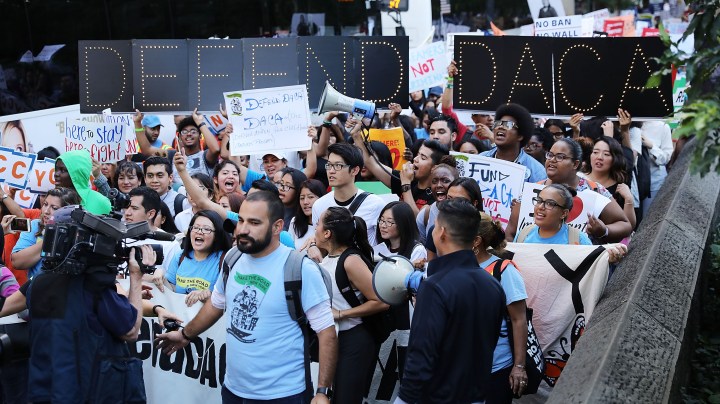With DACA Rescinded, Here’s What Recipients Should Know About Work Permits & Deportation

Hundreds of immigration advocates and supporters attend a rally and march to Trump Tower in support of the Deferred Action for Childhood Arrivals program also known as DACA on August 30, 2017 in New York City. Photo by Spencer Platt/Getty Images
On Tuesday, September 5, US Attorney General Jeff Sessions announced the end of the Deferred Action for Childhood Arrivals (DACA) program – which has shielded nearly 800,000 young undocumented immigrants from deportation and allowed them to work and go to school. The Barack Obama-enacted program faced its biggest threat when 10 attorneys general called on President Donald Trump to end the program. If he didn’t comply by September 5, they threatened to sue the government. (Tennessee’s AG withdrew the demand on Friday.) During the press conference, Sessions erroneously stated that DACA “denied jobs to hundreds of thousands of Americans by allowing the same jobs to go to illegal aliens” and that the program led to a spike in Central American refugees crossing the border, though the young children, who were fleeing drug and gang violence, would not be eligible for the protection. However, in the short press conference, Sessions didn’t offer any logistics, leaving many recipients confused about when their protections would run out.
In a press call that took place before the conference, the White House offered these details. Vivian Yee, an immigration reporter for The New York Times, broke down everything DACA recipients need to know. Check out her Twitter thread below: